Kayaking in Scotland: A Weekend with Sea Kayak Arisaig
The west coast of Scotland is a playground for the outdoor adventurer. Never-ending rolling hills, craggy coastline, and deserted beaches lapped by immaculate waters are just some of its alluring features. This corner of the UK manages to draw in hiking, climbing, cycling, and wildlife enthusiasts all year round, even in the autumn and winter months when the bitter cold creeps in, but the crowds are long gone.
That’s also the case for kayaking, which I found out in the last weekend of October when I joined Sea Kayak Arisaig for their final introductory course of the 2015 season. With years of kayak experience under their belts, the team – Lizzy, Tristan and Steve – lead expeditions and courses, anything from beginner half-day tours up to coaching awards, from May to October. Their base, Glenuig Inn, is around 30 miles west of Fort William and perfect for kayaking in Scotland; on the doorstep of shimmering lochs and rugged scenery.
The rain and wind beat against the window of my room at Glenuig Inn on the first morning, which made me nervous. I’d sat in a kayak for all of one hour before this weekend (on a warm, still July afternoon in Italy about six years ago, may I add) so I was certainly a prime candidate for a beginner’s course. It was when I met Lizzy, Tristan and Chris, who was going to be our guide for the weekend, that my nerves subsided – all of them seemed completely unfazed by the weather. Along with Chris and I, our group was made up of just two other people; Les and Phil.
After a short intro talk in Glenuig Inn, we suited up in the appropriate gear and were dropped off at a little jetty on the shores of Loch Moidart. The weather had calmed down by this point so the waters were still, but that didn’t stop the flurry of butterflies in my belly when the time came to get into the kayaks and launch. I wobbled, ever so slightly, as Chris gave me a gentle push out into the loch, but after that I wondered what I had been so worried about.
 Chris giving us an intro talk on the water on day one
Chris giving us an intro talk on the water on day one
Although the sensation of being afloat was almost entirely new to me, I took to it happily. Our first task was to paddle across to the other side of the loch, around 200m away, and with fresh first-day enthusiasm each of us confidently made our way across. We carried on westwards along the side of the loch, tucking ourselves next to the shore as protection from the wind. Chris cast his watchful eye over us as we continued, giving us tips here and there about technique and ways we could improve.
As I got used to the kayak, I took a look around. Hills towered up behind the jetty we’d just come from, looming over the waters, and the other side of the loch was rocky, lined with tufts of trees and foliage. It was profoundly quiet, a silence that was interrupted only by the odd car in the distance and our paddles sloshing in and out of the water.
A seal popped its head up a few metres from us, the first of many we saw that weekend. It bobbed around and watched us, cautious but curious, with only half its head out of the water. Throughout the course of the expedition we’d often catch a seal hanging around behind us, stealth and inquisitive.
The sun burnt away the clouds over the course of the morning. By midday the colours on the hills emerged – brilliant greens and golds – and we squinted looking up at them, surprised to see such sunshine. As we continued, the loch opened up to a much wider passage with a large, tall island in the centre. Every few minutes a heron would soar through the air above us, recognisable by its bulbous, curved neck. We paddled across the water to the left of this island, and were met with views of Castle Tioram.
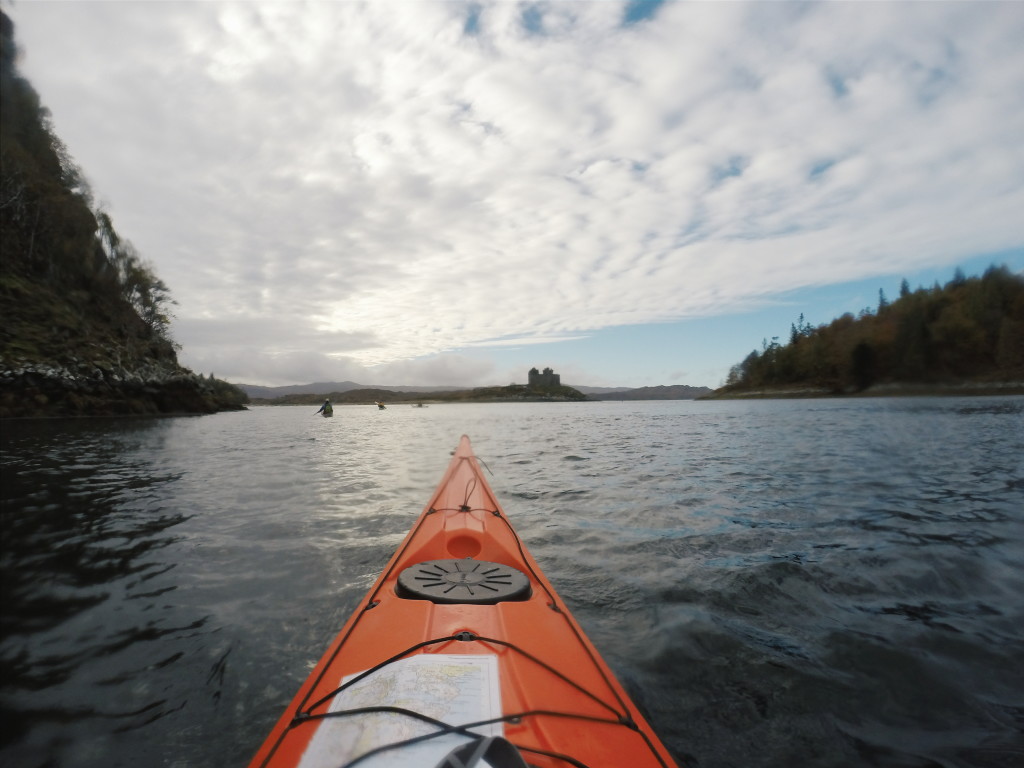 The silhouette of Castle Tioram in the distance
The silhouette of Castle Tioram in the distance
Perched on a mound of rock known as Eilean Tioram (‘Dry Island’) – a jagged islet that protrudes out from the rest of the shore – Castle Tioram was a seat for local clans in the Middle Ages. Long since abandoned, it now stands in ruin, crumbling brick-by-brick. We stopped here for our lunch break, sat on a rock at the foot of the castle, before we set off to paddle across the width of the loch.
This was the longest stretch we’d kayaked so far, and as the wind had picked up I really had to power my paddle into the water to get some speed. Chris taught us how to use the skeg, a stop on the rear underside of a kayak that you can put up or down to control balance and steering depending on the direction of the wind.
I played around with different positions to try and master it, zig-zagging across the loch but slowly and surely understanding the technique. I noticed my skill improving as the afternoon went on, feeling more comfortable on the water even after just a few hours.
 Happily floating on glassy water, day one
Happily floating on glassy water, day one
It was here that we started to come back the way we came, heading around the other side of the tall island, and this is where we caught sight of some sea otters. Camouflaged by the dark scenery, we could just about make one out on the shore, diving in and out of the water. As we continued around the island, we watched as two more otters jumped up on a boulder.
I held my breath, stopped paddling, and was transfixed. We all were. The sun shone behind the otters, giving them golden outlines, and one of them shook to rid itself of water. So close were we that we could see the individual dazzling, jewel-like droplets being flung from its body. We silently, with jaws dropped, drifted by. I felt like my eyes were the camera of a wildlife programme, panning across the scene. So beautiful was that moment, I half expected David Attenborough to interject and narrate it.
That evening, over a huge, fortifying bowl of chilli and a glass of wine at Glenuig Inn, I thought back on how lucky we had been. Not only was Scotland’s wildlife out in full force, but the sun shone for most of the day, defying the odds. I curled up in my comfy bed in the inn’s bunkhouse, satisfyingly shattered from a day outdoors, and crossed my fingers for more favourable conditions in the morning.
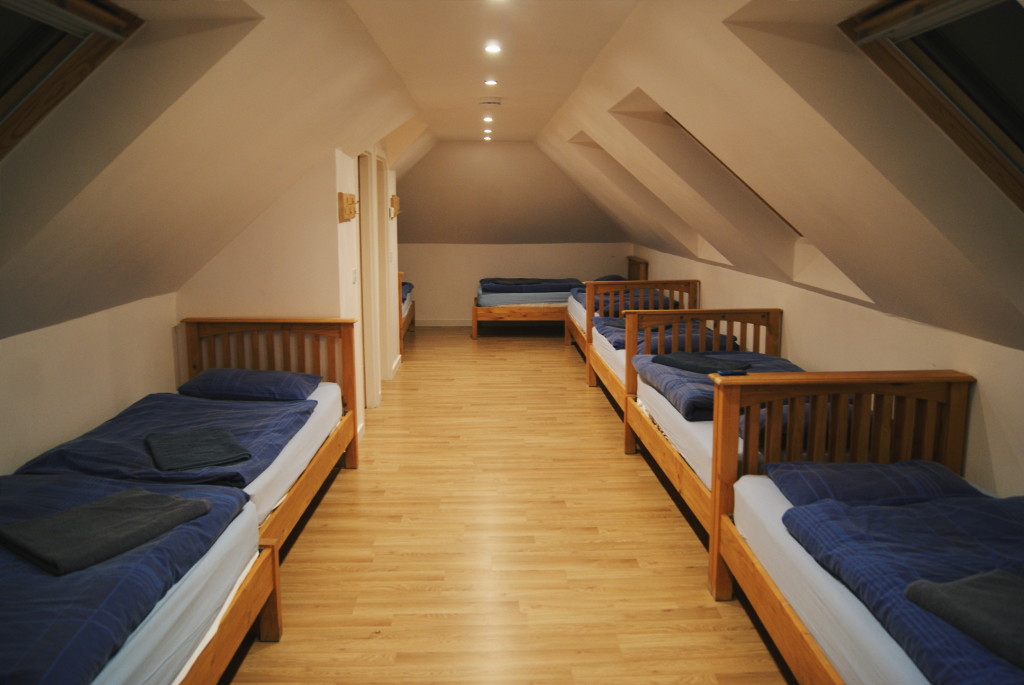 The bunkhouse at Glenuig Inn, one of several accommodation options available here
The bunkhouse at Glenuig Inn, one of several accommodation options available here
My prayers were answered. Sort of. The sun was out again on day two, but the wind had picked up dramatically. This time we launched directly from the shores next to Glenuig Inn, and followed the coastline northwards into Loch Ailort. We moved steadily as a group, spending longer stretches of time just paddling than the day before, building on our skills.
When we did reconvene to chat, it was for Chris to explain our direction. Loch Ailort is dotted with a handful of little islands, and as the wind and swell started to build up, careful navigation through the scenery was key. Chris paddled between us and the shore at all times, keeping us away from the choppy, foamy water that slapped up against the rocks.
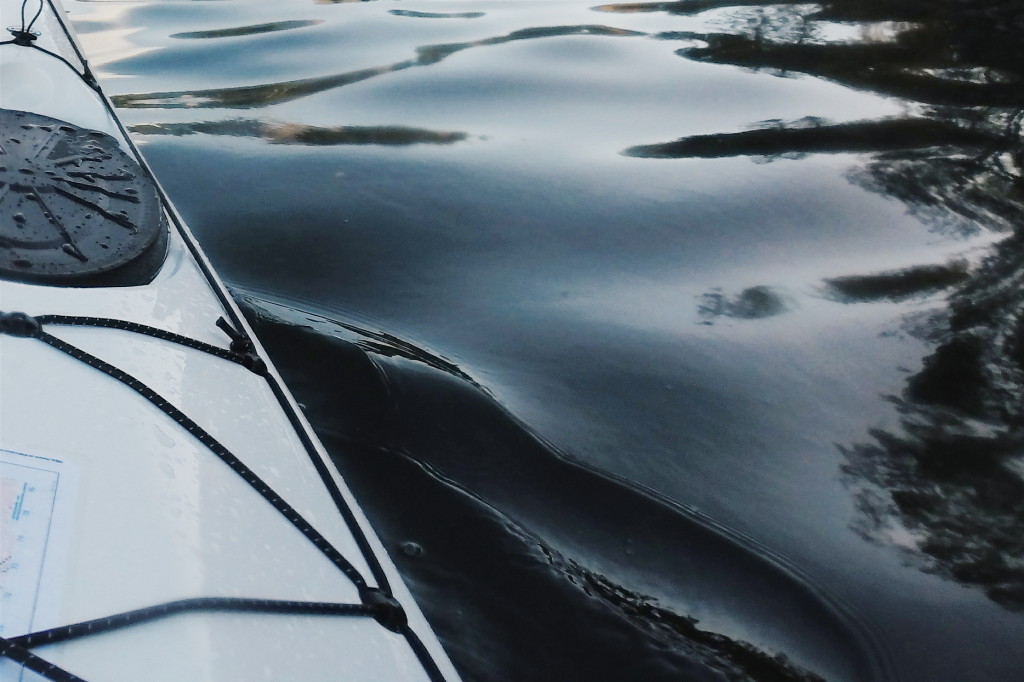 A brief patch of calm waters on day two
A brief patch of calm waters on day two
By late morning the wind was strong, and I had to use a lot more force to push on, with arms a little cramped from the previous day. Maintaining direction was difficult: one minute I felt like I was exactly on my intended path, the next I realised I was 50m left of where I was aiming for. We all did our best to stay on track, but the wind and ocean were calling the shots.
A shore covered in a thick layer of slippery seaweed was our port of call for a lunch break. We carefully moored the kayaks on the jelly-like cushioning, and while clambering inland I noticed how clear the shallows were. They were so transparent that you could pick out specks of sand on the floor of the loch, and see every detail on the strips of rubbery seaweed suspended underwater.
Chris was concerned about going back the way we came to return to Glenuig Inn. The winds seemed to grow stronger by the minute, so it was a risk to retrace our steps and battle the same route again. Instead, we paddled just a few hundred metres away from our lunch spot, to a protected area of water at the foot of a large hill.
Here we spent the afternoon practising new skills: strokes, edging turns, and a rescue, which involved Chris playing the victim. Despite not having the opportunity to continue paddling onwards and explore the area further, this turned out to be one of the most useful parts of the weekend, equipping us for future trips.
Tristen picked us up from the loch in the late afternoon, and as we began to hoist the kayaks onto his trailer, I felt a pang of sadness that it was all over. I went into this course apprehensive about my lack of ability, worried that I wouldn’t have the skills to keep up with others, but I came out of it confident and wanting more. In the days that followed the trip, I found myself racking my brains to work out the next available time I could get out on the water.
It seemed then and there, and even now, that there was no better place to learn to kayak than on the west coast of Scotland. The lochs were our playground, the seals and otters our companions, and the wild, untamed landscape our unforgettable backdrop.
Like what you read? This post is a re-worked version of a (much) longer article for A Year in the UK & Ireland – a long-form narrative travel journal available for pre-order now.

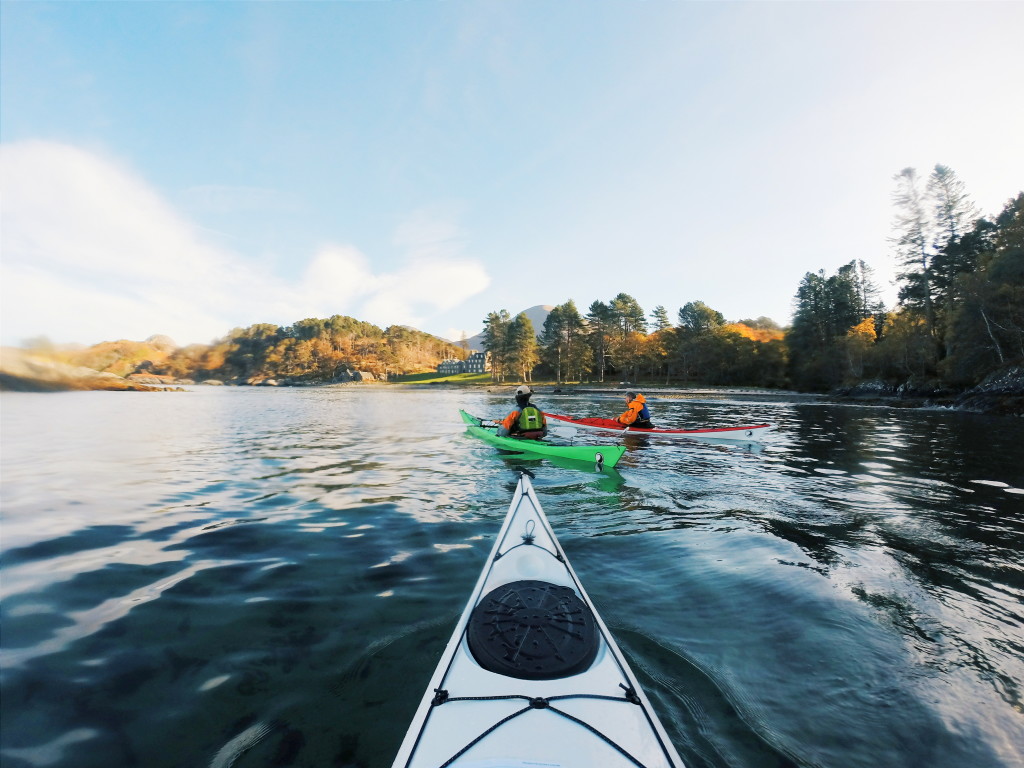
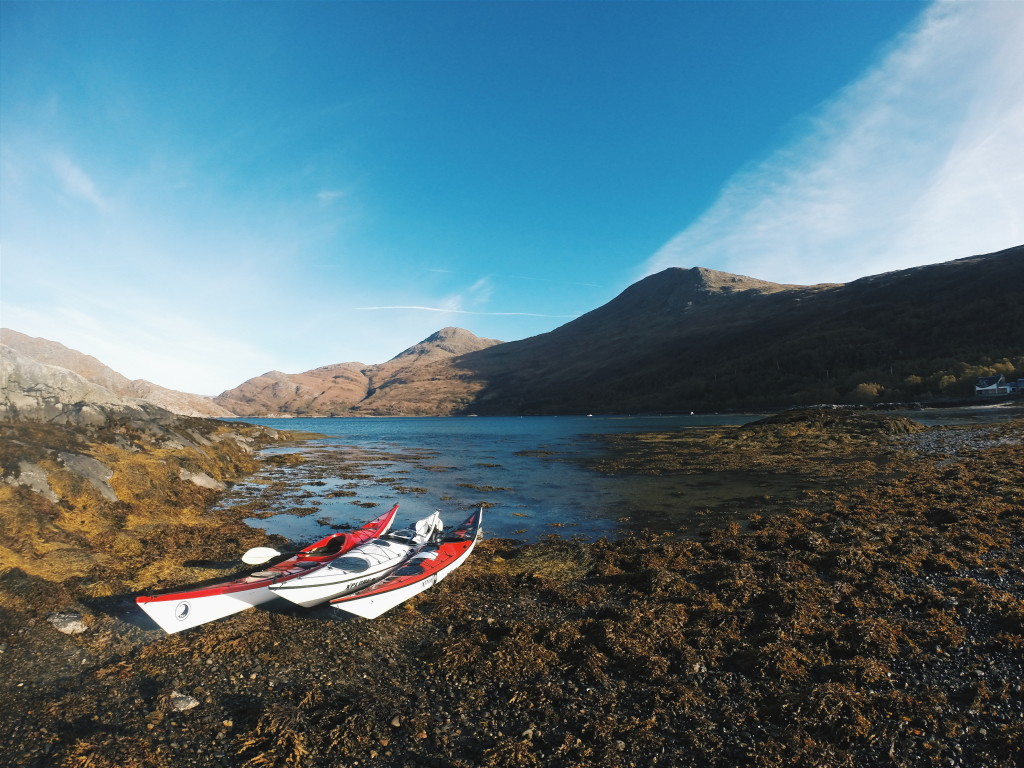
Leave a Reply